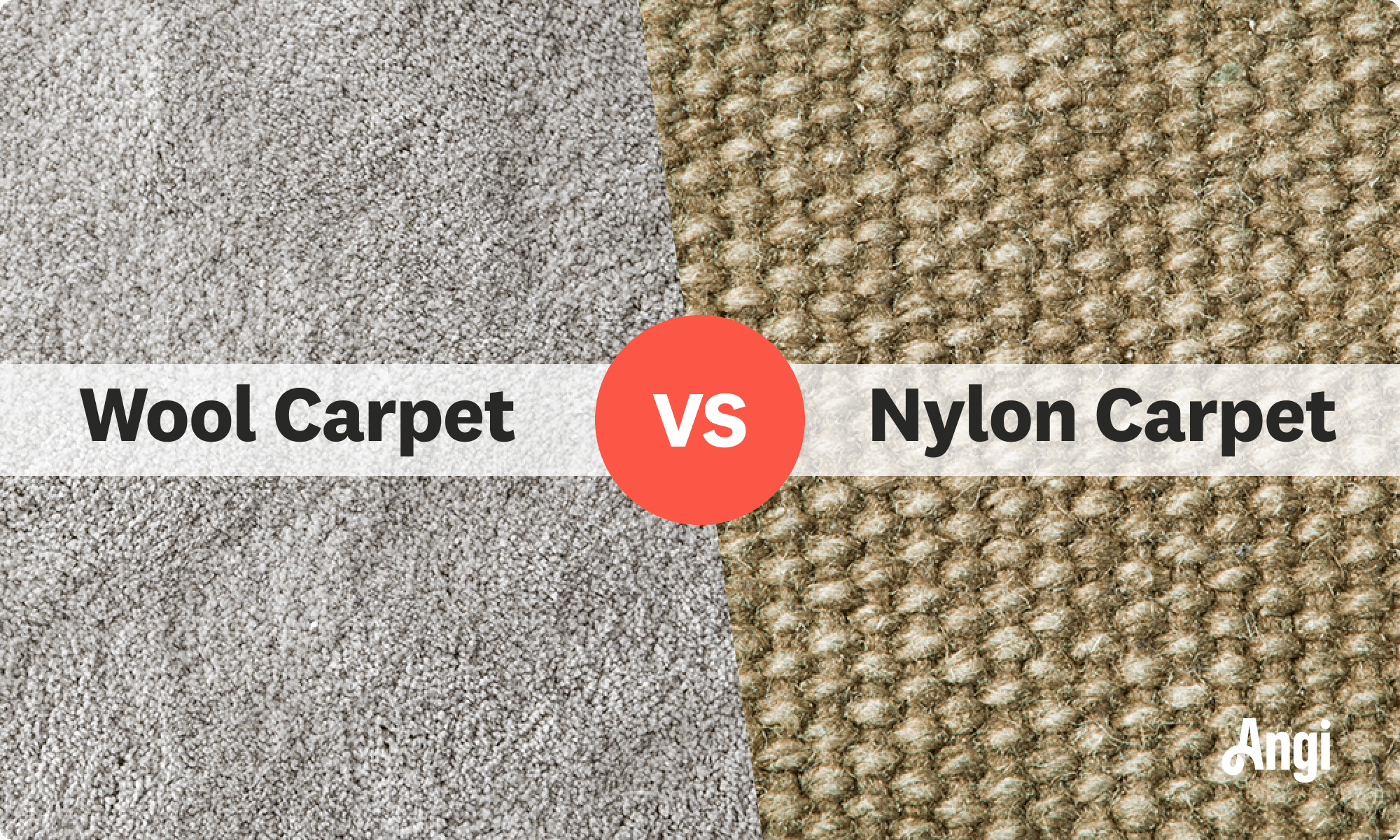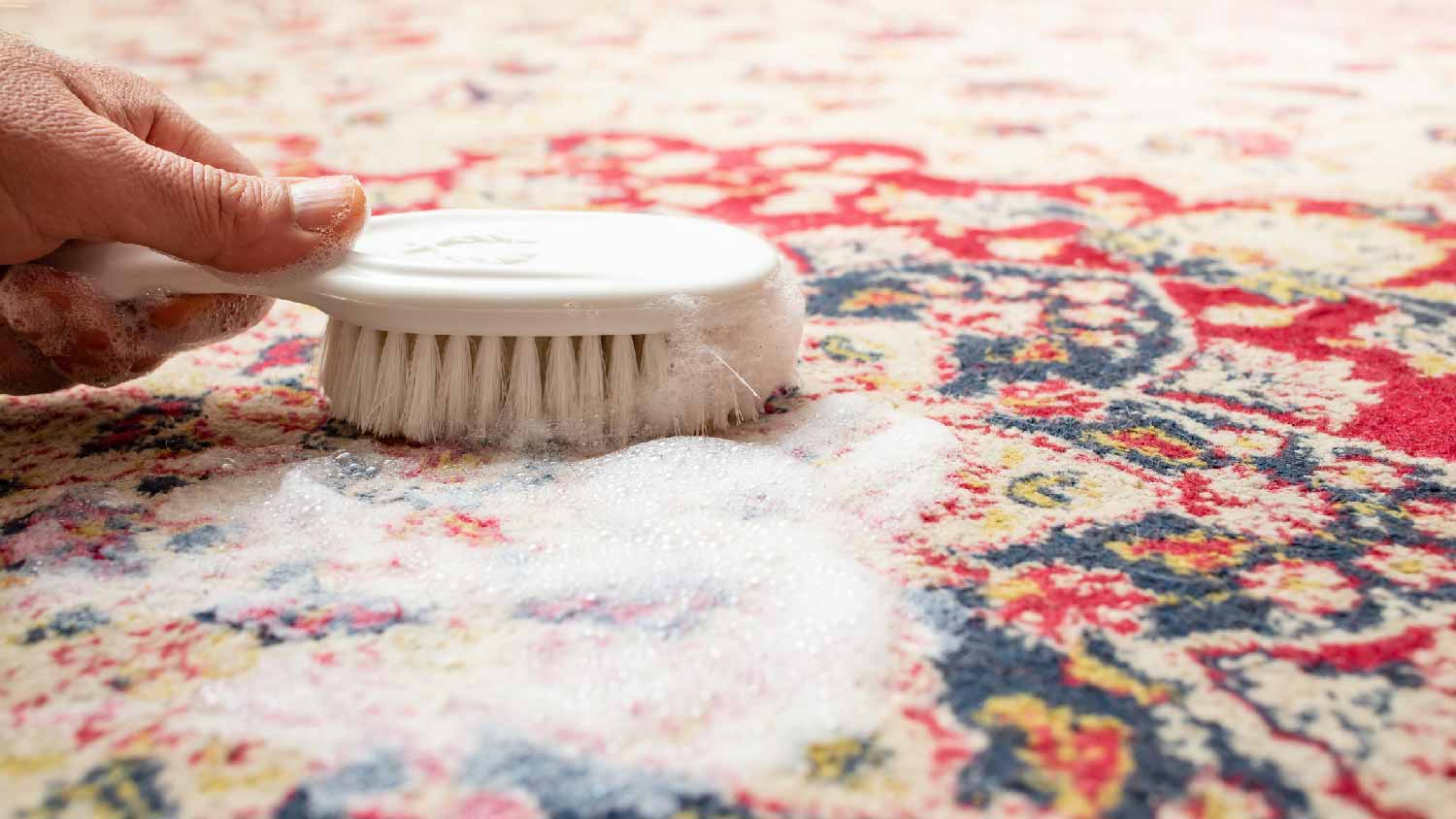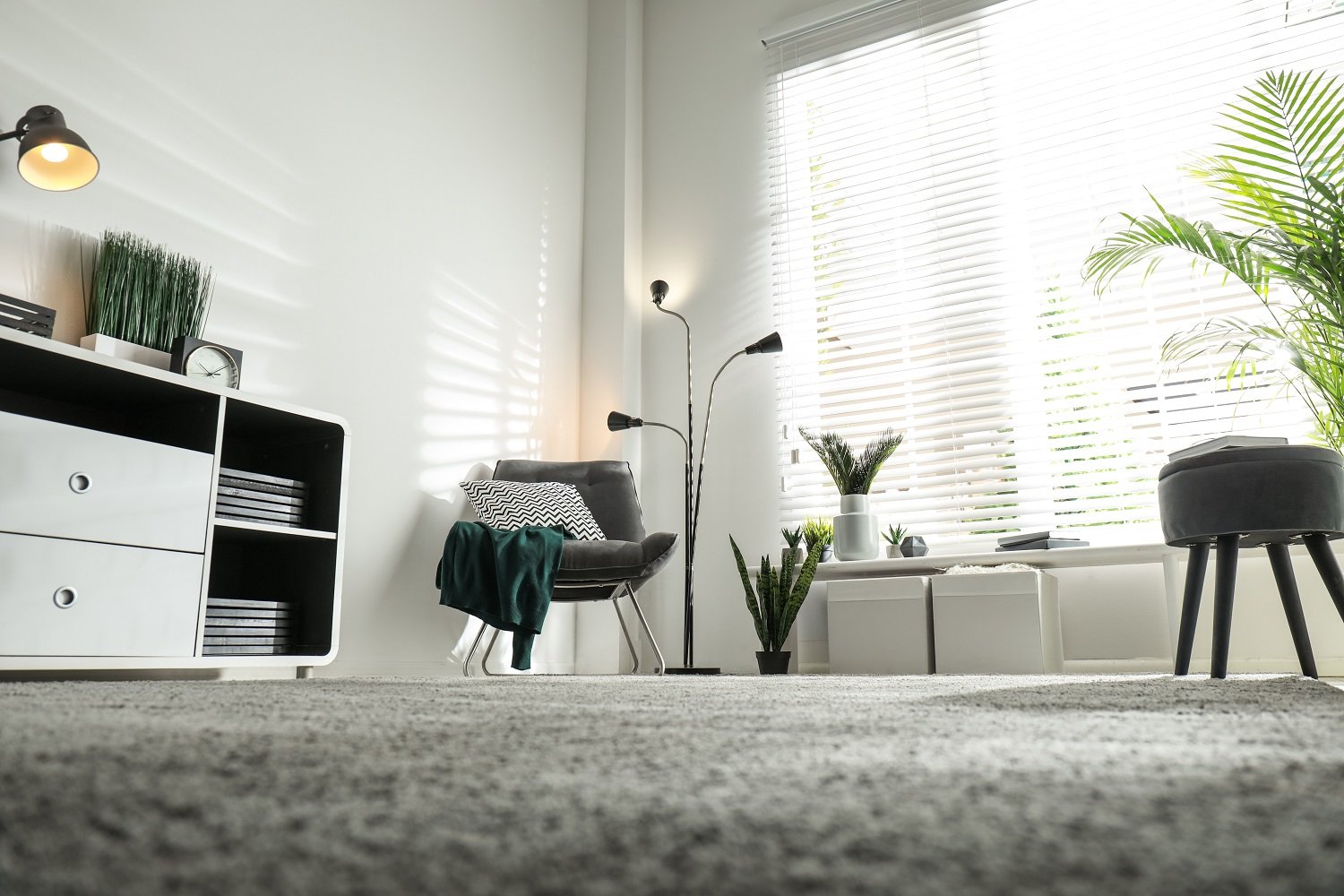Wool vs. Nylon Carpet: Which Is Best for Your Home?
Step into plushness with the perfect pile


Wool, which costs $4 to $20 per square foot, is a natural fiber that’s biodegradable and eco-friendly.
Nylon, which costs $2 to $5 per square foot, is a synthetic fiber that’s both durable and versatile.
Those looking for a luxurious fiber should opt for wool carpeting.
Homes with pets and small children may fare better with nylon carpeting.
When it comes to choosing the right flooring for your home, one of the most significant decisions you'll face is which type of carpeting to put in. Part of that decision involves picking which carpet material to install, and two of the most popular materials are wool and nylon. Both materials have their unique characteristics, benefits, and drawbacks. Let’s dive into the differences between wool versus nylon carpet, exploring their pros, cons, and more.
Wool vs. Nylon Carpet: Key Differences

Wool and nylon carpets differ in their composition, durability, maintenance, and price. While wool is a natural fiber known for its luxurious feel and durability, nylon is a synthetic material prized for its resilience and stain resistance.
What Is Wool Carpet?

Wool carpet is crafted from the fleece of sheep or lambs. People adore it for its soft texture, natural warmth, and long-lasting performance, making it a perfect carpet option for bedrooms, home offices, and any other room where comfort is paramount. Here are the key characteristics of wool carpeting.
| Pros | Cons |
|---|---|
| Luxurious | Expensive |
| Natural fiber | Prone to stains |
| Eco-friendly | Higher absorbency |
Best for:
Those seeking luxury
Those prioritizing durability
Eco-conscious individuals
Pros of Wool Carpet
Wool carpet offers several advantages, including exceptional luxury and softness, insulation properties, and longevity. Its natural resilience allows it to maintain its appearance over time, making it an excellent investment for those looking for long-term flooring solutions. It’s also a natural fiber, which means it’s an eco-friendly and biodegradable flooring option that’s perfect for reducing your carbon footprint.
Cons of Wool Carpet
Wool carpet tends to be more expensive than synthetic alternatives, and wool carpet requires regular cleaning and maintenance to preserve its appearance. Additionally, wool has higher absorbency and is susceptible to staining, which means it may not be the best choice for high-traffic areas or households with pets and children.
What Is Nylon Carpet?

Nylon carpet is a synthetic flooring option made from petroleum-based chemicals. It’s known for its strength, resilience, and wide range of color options. Here are the key characteristics of nylon carpet.
| Pros | Cons |
|---|---|
| Durable | Prone to fading |
| Stain-resistant | Less eco-friendly |
| More affordable | Static buildup |
Best for:
Active households with pets and kids
Budget-conscious individuals
Those prioritizing stain resistance
Pros of Nylon Carpet
Nylon carpet boasts exceptional durability and stain resistance, making it one of the best carpets for pets and kids. It’s also a great option for high-traffic areas like living rooms, hallways, and stairs. Available in many colors and styles, nylon carpet allows you to customize your flooring to suit your decor preferences.
Cons of Nylon Carpet
Nylon carpet may fade over time, especially in areas exposed to direct sunlight. Additionally, nylon is a synthetic material derived from non-renewable resources, making it less environmentally friendly than natural alternatives, such as wool.
Wool vs. Nylon Carpet

Finally, let’s take a look at which crucial areas—like appearance, style, value, and more—each type of carpet takes the lead in.
Comfort and Appearance: Wool
Both wool and nylon carpets offer a luxurious look and feel, but wool tends to have a softer feel and a more natural appearance. Those looking for premium luxury should opt for wool carpet over nylon.
Color and Style Options: Nylon
While wool carpeting does have some customizability when it comes to size, shape, and color, nylon carpet excels in this category due to its synthetic composition. It offers a broader range of colors and styles to choose from compared to natural wool fibers.
Durability: Nylon
Wool carpeting can have a long life span in homes with low foot traffic and no kids or pets. Nylon carpet, however, is renowned for its exceptional durability and resilience in spite of traffic patterns and usage.
Maintenance: Nylon
Nylon carpet's stain-resistant properties make it easier to clean and maintain than wool carpets. Nylon carpet also wins in this category due to its inherent resistance to stains and spills, making it a practical choice for dining room carpeting as well as households with children and pets.
Moisture Resistance: Nylon
Neither wool nor nylon carpet is waterproof, but nylon may perform slightly better in humid environments since it’s synthetic. This makes nylon carpet a better option for those looking for higher moisture resistance due to frequent pet messes and spills.
Eco-Friendliness: Wool
Years from now, when the time comes to toss this carpeting, you’ll want to know that you’re contributing to a greener planet. Wool carpet is biodegradable and renewable, making it a more sustainable choice of carpet material compared to nylon, which is derived from non-renewable resources and is made with synthetic materials.
Home Value: Wool
While both wool and nylon carpets can enhance the value of a home, wool's luxurious reputation may contribute to a higher perceived value among buyers. This is particularly true in regions and neighborhoods where eco-friendliness and indoor air quality are big concerns.
Price: Nylon
While wool and nylon carpets both have their benefits, for many people, the choice of carpet material comes down to how much it will cost to install the carpet. At $2 to $5 per square foot, nylon carpet is more affordable than wool’s $4 to $20 per square foot, making nylon a practical choice for homes with tight budgets.
How Much Does It Cost to Install Carpet?
On average, the cost to install carpet ranges from $3.50 to $11 per square foot. Your overall costs will be determined by the size of the area and the type of carpet you want to install, as some materials are cheaper than others. However, investing more in quality materials up front will save you money in the long term. Expect the total cost of hiring a local carpet installer to be $500 to $1,000.
DIY vs. Hiring a Pro
Installing carpet yourself can be very challenging, but it’s not impossible for an experienced DIYer. However, it is a big project that requires a lot of time and specific tools. There’s also expertise involved, as one wrong move in the carpet installation can cause your carpet to be bumpy or uneven. If you don’t feel comfortable doing the job yourself, it’s best to hire a pro you know will do the job right the first time, as it will save you time and money in the future for any botched job.
Frequently Asked Questions
Both wool and nylon are excellent options for those with allergies. Wool is naturally resistant to dust mites as the material has a low moisture content and natural air-purifying properties. Low-pile nylons are also easy to clean and resist mildew and mold growth, which trigger allergies.
Whether your wool carpet is less toxic than nylon depends on the type of wool material you’re purchasing. Completely natural, organic wool that is undyed and untreated is the best bet if you’re looking for the least toxic option, and if you get it with a natural latex backing, even better! But some wools are treated and dyed using toxic chemicals, so if this is a concern, consult your manufacturer to get a full breakdown of your wool carpet’s material.
While wool carpets can emit VOCs (volatile organic compounds), they’re one of the lowest emitters compared to other household furnishings, building materials, and textiles. Again, the more natural and untreated your wool compounds are, the less likely you’ll have to worry about them emitting VOCs. If you want to minimize the impact of these VOCs, deep clean the carpet regularly and invest in a quality air purifier.





- Nylon vs. Polyester Carpet: Which Is Better for Your Home?
- The Ultimate Guide to Different Types of Carpet
- The Ultimate Guide to Choosing the Best Carpet for Kids and Pets
- What’s the Best Carpet for Living Rooms? These 5 Options Are Ready to Impress
- How to Choose Carpet for Any Room of Your Home
- Best Carpet for Dining Rooms: 6 Standout Picks That’ll Have You Feasting in Bliss
- How Long Does Carpet Last? 7 Signs You Need to Replace It
- What Is the Best Carpet for High-Traffic Areas?
- How to Dispose of Carpet Properly
- Can You Put Carpet Over Carpet? Pros, Cons, and Best Practices










